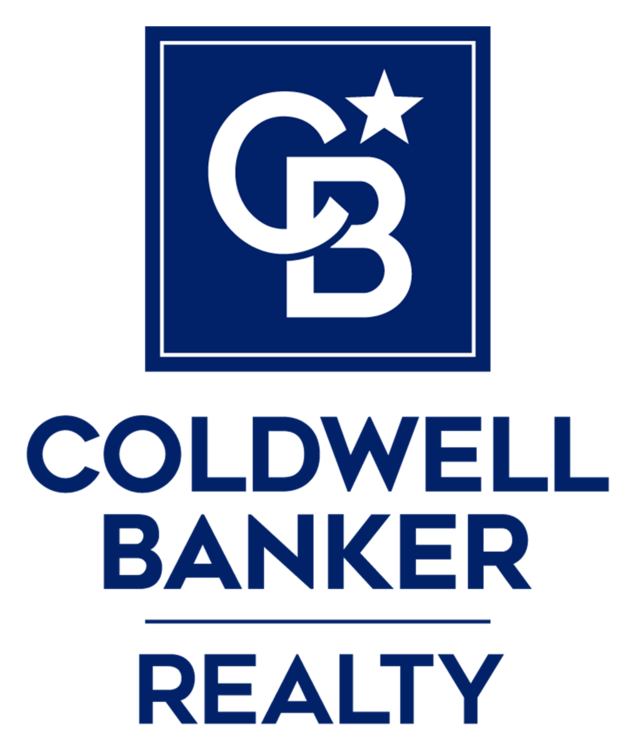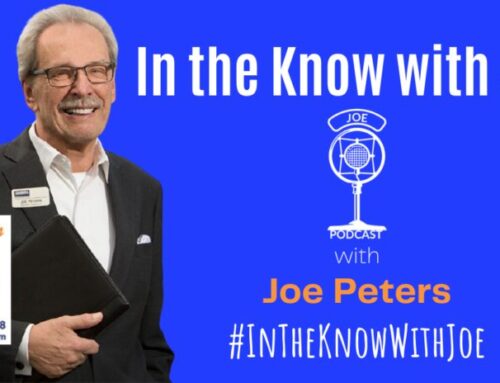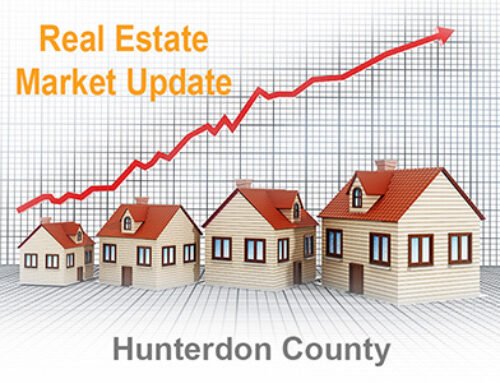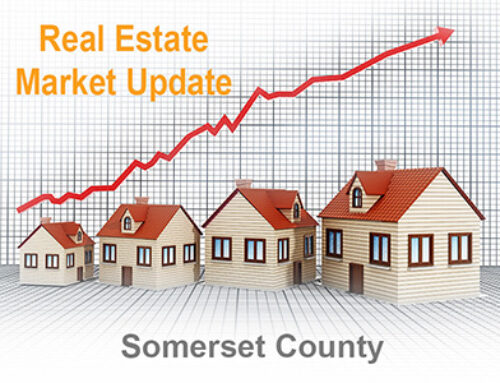Get ahead of the residential real estate market drivers in Somerset County, New Jersey, with Coldwell Banker Residential Broker sales associate Joe Peters. Joe’s monthly market update walks you through the economic conditions and trends that influence our local markets. You will come away knowing “what” is happening, and more importantly, “why” it is happening. As a result, you will be better informed to make home buying and selling decisions in 2021.
What’s Happening in Somerset County’s Real Estate Market?
Imagine driving 85 to 90 miles an hour for the last 15 miles and then having to slow down to 65. It feels like you are now going slow, but you are still going at the top speed. That is what has happened in the local real estate market over the past 15 months. Things are still going along at a fast clip, but just not at the previous higher pace.
Based on the last full month’s contract sales, statistics still show a severely deficient supply of inventory of just over one month. Normal market conditions average four to six months of inventory in Somerset County. Units going under contract inched up to 31 days on the market. Four hundred and fifty-four units went “under contract” in August, down from 521 in the prior month. Newly listed properties in the same period totaled 333, down from 383 in the preceding month.
Our total inventory number decreased from 1,011 this time last year to 657 units, 35% less than last year. And, inventory numbers were up by 8% in Somerset County vs the prior month (not a good sign for buyers). Sales were down 12% in August (over last year), as we saw a slowing of buyer activity. It is still an optimum supply and demand curve for our sellers.
New Jersey Residential Real Estate Market Forecast
Because of the continued move to the west (urban flight), pent-up demand, and attractive mortgage rates, and sellers coming on the market as Covid fears seem to be in a state of flux, we expect strong listings and sales thru the balance of 2021.
The good news is that most of the new listings are selling very quickly. So, even though we still have low inventory levels, sales are up. We had been witnessing many homeowners facing financial and/or life uncertainty and holding off on listing their properties. That seems to be subsiding. There is also uncertainty in finding another house to move to.
Many sellers and buyers feel safer by taking advantage of virtual showings. Buyers are adjusting to the new virtual selling and buying tools and these methodologies are leading to safer showings, less actual showings. Time will tell if these new approaches have an ongoing impact. But regardless, we still have many more buyers than sellers.
Somerset County Real Estate Market Inventory Breakdown By Price For Last Month:
| August | August | Total | ||
| Somerset County | New | Under | Active | Months’ |
| Listings | Contract | Listings | Supply | |
| Condos/Town Houses * | 110 | 185 | 191 | 1 |
| Over 55 Communities* | 14 | 21 | 25 | 1 |
| $000K to $199K | 7 | 12 | 13 | 1 |
| $200K to $299K | 46 | 47 | 74 | 2 |
| $300K to $399K | 74 | 117 | 139 | 1 |
| $400K to $499K | 58 | 90 | 96 | 1 |
| $500K to $599K | 38 | 48 | 66 | 1 |
| $600K to $699K | 31 | 39 | 61 | 2 |
| $700K to $799K | 19 | 36 | 30 | 1 |
| $800K to $899K | 17 | 16 | 26 | 2 |
| $900K to $999K | 10 | 17 | 22 | 1 |
| $1,000K and Up | 33 | 32 | 130 | 4 |
| Totals for August | 333 | 454 | 657 | 1 |
| Average Price | $581,567 | $555,419 | -4.5% | |
| Average Days on Market | 31 | |||
| * Included in $ breakdowns |
- 59% of sales in houses > $500,000
- 34% of sales in the $600,000 to $1,000,00K range
- 07% percent of total sales (or 32 in total) in houses >$1,000,000
Somerset County Real Estate Market Inventory Breakdown By Municipality For Last Month:
| Active Listings | Under Contract | Month’s Supply | |
| Bedminster Twp | 38 | 13 | 3 |
| Bernards Twp | 56 | 56 | 1 |
| Bernardsville | 40 | 15 | 3 |
| Bound Brook | 9 | 7 | 1 |
| Branchburg Twp | 32 | 17 | 2 |
| Bridgewater Twp | 86 | 59 | 1 |
| Far Hills Boro | 4 | 3 | 1 |
| Franklin Twp | 72 | 106 | 1 |
| Green Brook | 23 | 9 | 3 |
| Hillsborough | 70 | 53 | 1 |
| Manville Boro | 15 | 8 | 2 |
| Millstone Boro | 1 | 0 | |
| Montgomery Twp | 42 | 42 | 1 |
| North Plainfield | 43 | 17 | 3 |
| Peapack Gladstone | 8 | 2 | 4 |
| Raritan Boro | 3 | 4 | 1 |
| Rocky Hill Boro | 4 | 1 | 4 |
| Somerville Boro | 18 | 10 | 2 |
| South Bound Brook | 11 | 5 | 2 |
| Warren Twp | 53 | 22 | 2 |
| Watchung Boro | 29 | 5 | 6 |
| Totals | 657 | 454 | 1 |
Only one area had no sales last month:
- Millstone
One area reported 1 or 2 sales each last month:
- Peapack/Gladstone
- Rocky Hill
Hotspots:
- Bernards/Bernards Twp. – 69 Sales
- Bridgewater – 59 Sales
- Franklin Twp. – 106 Sales
- Hillsborough – 53 Sales
- Montgomery – 42 Sales
- Warren/Watchung – 27 Sales
These hotspot areas equaled 78% of the sales last month. The average new listing coming on the market last month neared $581,567 The average price of a unit going “under contract” was $555,419 (5% less).
Note: To get a competitive price point on your property based on location and uniqueness, contact me at (908) 238-0118. Coldwell Banker’s big data technology capabilities will give you a unique advantage. I can show you the latest age and earnings breakdown for your particular area where people move into that area from and how I can market to those specific areas and demographics directly. The result is in you receiving the maximum selling price with a shorter time on the market. Houses priced and marketed accurately sell faster, especially with a real estate industry veteran and local expert helping you navigate the process.
“Why” it is happening
New Jersey’s Economic Drivers:
New Jersey Home Sales and inventory levels:
- The rebound that started in June of last year has now continued through August of this year but is showing signs of cooling down.
- We still see many sellers reluctant to list due to uncertainty in this troublesome time and their ability to find other housing themselves.
- The current month’s supply of inventory in Hunterdon and Somerset County is now under 2 months. This is due to the quick sales as new inventory comes on the market.
- Hunterdon and Somerset County have about 29% & 35% less inventory than we had a year ago, respectively. This is a significant drop. And, it is predicted to stay low as sales outpace listings because now inventory is selling almost immediately.
- N.J., on the whole, has increased by 6,000 units since January. Byt, unsold inventory is still lower than last year by sixteen percent.
- Decreases in inventory have occurred in all price points, with the under $400,000 market seeing the most considerable impact and the $400K to $600K the second largest.
- We have seen increases in sales across most price points, with the under $400K range seeing a slight decrease of 8% due to lack of inventory.
- New housing is not keeping up with our population growth.
Interest Rates:
- Interest rates have been holding over the past few weeks but are threatening to inch up.
- The economy is adjusting, and average Interest rates are just under 2.9% for a 30-year conventional mortgage. A fifteen-year conventional mortgage rests at just under the 2.2% mark. Five-year arms are just under the 2.45% range.
- Mortgages are becoming harder to get for some based on which industry they are employed in and the new stricter rules being adopted by lenders. This could affect the size of the buyer pool.
- And, mortgage forbearance is causing unforeseen issues in the mortgage market, which may also cause a drop in the number of available sellers.
- As said, rates in the last few months have been holding to inching up based on the 10-year note yield. For the past couple of months, consumer prices (inflation) have run above the 30-year mortgage rates for the first time in 50 years. As this is unsustainable, either we will need to see inflation come down a lot, or mortgage rates must rise, or both.
National Job Front:
- In the second quarter, the US unemployment rate continued to improve and added another 235,000 jobs in August (less than expected) lowering the rate to 5.2%. This is encouraging, but we have to keep in mind that we have natural job growth of about 175K per month, and this is not deducted.
- Also, we still have 8+ million unemployed vs. just over 6 million at the start of the pandemic.
- These numbers indicated that we have added 16+ million jobs back to the economy as of the month that ended in August of 2021.
- But the balance of the 8 million unemployed will take years to get back to where we started as they are in the hardest-hit sectors of Leisure, hospitality, and food services.
- The claims have been falling each week and indicating that the PPP and associated programs are starting to work.
- Fortunately, the economy was robust going into this, but the effect is still devastating and long-term.
- The new stimulus bill has also offered some relief on the lower end of the economy.
New Jersey Job Front:
- In 2019 NJ added 39,000 jobs once again. N.J. added 39,000+ jobs in 2018 as compared to 47,100 for the same period in 2017.
- The NJ unemployment numbers were at 3.5% pre-Covid and now have followed the national numbers but are now a bit higher than the U.S. at 7.3% for the last full month reported, which was July with just under 14,600 jobs added.
- Construction, food services, and accommodations are again the leaders in job losses, though more states are now citing pain in retail, wholesale trade, according to the U.S. Department of Labor. Health care, social assistance, and manufacturing are shedding workers, too.
- These job losses will undoubtedly have an impact on the buyer’s market in 2021.
Rental Market Trends:
- Rental prices in New Jersey rose again in 2020, averaging just over $1,850 per unit. Current vacancy rates in New Jersey have increased to around 3.7% in central N.J. & state-wide.
- The drop in New Jersey’s homeownership contributes to rental demand. A 12+ year trend shows a decrease from 71% to 66%. This 7% decrease compared to an 8% national decrease contributes to the slower recovery of home prices in the state and adds over 20,000+ additional renters in our state. However, the 71% level resulted from the lax lending standards of the early 2000s and is considered acceptable. Households with no children stand at 65%, reflecting the decline in our school population.
- One article states that the average homeowner who is 65+ has an average net wealth of over $318K, while the same for a renter is only just under $8K. It also offers a stable place to live, an evident hedge against inflation, and a way to build wealth (a strong argument for homeownership).
- However, the number of renters has increased by 7% over the past 25 years, with the less educated leading the way. We saw more educated millennials moving east into higher rent and cost of living areas that eat into their discretionary income (including savings). It makes one wonder where this all is heading.
- The central NJ vacancy rate now stands at 2.5% resulting in a minimal supply of rentals being available.
New Jersey Foreclosures:
- Foreclosures in NJ in 2018 were the lowest in the state in over four years. And 2019 was even better with just under 38,000 foreclosure filings (the weakest since 2012). For 2020, N.J. looks to be on track for 12,000 foreclosures, representing a 70% decline. This could change depending on how long it takes workers to get back on their feet from the COVID-19 pandemic and how many bankruptcies we see in later 2020.
- However, New Jersey continues to face rising foreclosure rate filings at about 4.5% (which is up significantly from a year earlier). Other states have begun to or have already recovered. And, some states like N.Y. are still much higher with an over 6% filing number. In a tight real estate market, these foreclosures sell at a discount.
- The national baseline number sits slightly under 3.5% (up from 1.2% a year earlier).
- The forbearance numbers will affect foreclosures as that program comes to an end. About 17% of the total forbearance cases are still unresolved and headed in the wrong direction. But, this is not yet showing in these numbers.
- However, this effect will be nowhere near the last housing crisis since the is a lot of positive equity in houses today. But delinquencies have been rising.
Real Estate Market Recap
Changes in Lifestyle (Pre Covid):
- The average age at marriage moved to the mid to late 30s (up seven years from just a decade ago).
- Families usually have only one to two children due to costs and the ability to choose.
- 70% of all NJ homes have no children of school age, and 50% do not have more than one person in them. This factor minimizes the need for larger housing not only in NJ but everywhere.
- As a result of job opportunities, buyers were gravitating to areas within 15 miles of NYC with sound mass transportation systems.
- But, we were already starting to see a reversal of the above as late millennials were looking for more space and a place to better raise their upcoming families.
- This trend was sure to continue as 80% of consumers still perceive homeownership as part of the American Dream. It is just what they want to buy (or rent) that has changed.
- Builders have been thinking of larger 4 BR center hall colonials on 1+ acres in the country (based mostly on local building codes).
- Buyers were thinking of a smaller luxury hi-rise close to mass transportation and work in the east (truly a mismatch).
- 60% of all new housing starts in 2019/20 in NJ were in the rental sector, and the 2020 numbers surpassed that. This is contributing to the lack of new construction and inventory.
- Also, builders are encountering supply chain issues causing delays and rises in pricing.
Changes in Lifestyle (Post Covid):
- The “Great American Move” is a term that we are starting to see for this new lifestyle.
- The movement west was exacerbated by the pandemic and civil unrest in the city but has seen a weakening recently.
- But, this move is primarily among the more educated and skilled workers that can adapt to a work-from-home environment. First responders and most lower-skilled service workers are not able to work remotely from home.
- Now, there is an open question of how many workers will continue to gravitate away from (or return to) the city as they adapt to working from home and as buyers needed a live/work/play/learn environment.
- Open floor plans, the list-topper for the past twenty years was no longer important as buyers are gravitating towards more compartmentalization within the home.
- Live/Work/education/Exercise (or play) areas are now key.
- Also, backyard recreation facilities such as recreational areas and pools now have a preference, and backyard oasis environments provided additional value for the above lifestyle.
Market conditions:
- What a difference in consumer thinking since a year ago July.
- Consumer confidence was put on pause (at best) last year and then started to fast forward a year ago in June or 2020 (and has not slowed appreciably since until recently).
- A winter slowdown has never appeared in the real estate market.
- Consumers will still see homeownership as a sound long-term investment based on affordability. It is just that their shopping list as to what they want has changed.
- And, in general, homeowners are sitting with more equity than ever (NJ reports 95+% with positive equity) and are no longer using their homes as an ATM. The average equity in NJ rose by $42K.
- In 2020 a lot of these strong equity homeowners are deciding to sell in order to take advantage of the buying surge.
- Some moved to their second homes or out of state as they no longer needed to commute.
- Others pushed up their retirement plans.
- The current seller’s market has resulted as we still have many more buyers than sellers.
- People usually buy and sell homes based on life events. This will not change. Life events have gone on (maybe even faster).
- And never before seen (but slowly rising) low-interest rates plus the move west (which was already underway) has helped the migration pattern towards NYC to reverse.
- We are hoping to see a continued trend down in new cases as the vaccines are starting to become a reality and things are better understood, and people get back to a new normal lifestyle.
- The new delta variant is now causing concerns in this thinking.
- But it is anticipated that the new lifestyle will be much different from the old as we adopt the best of the two cultures.
- Nation-wide we actually sold more houses in 2020 than in 2019. And we see 2021 as being even better.
- The current shortage is for a different reason than in 2020. People who would list their homes in 2021 are now being held back because of finding new housing themselves. The problem is feeding on itself.
- As a result, we see many multiple offers with competitive terms like the waiving of appraisals and inspections.
- Because of the above point, we are now starting to see some buyer fatigue which has slowed the market a bit.
Forecast:
- The effect of the COVID-19 pandemic now seems to be raising its head a bit due to the delta variant.
- The economy is continuing to recover (but at a slower pace) from the recent rise in unemployment numbers.
- It has been predicted by most that the balance of the recovery is going to be a long multi-year effort. In effect, we have put the easy part of the workforce back to work, and the hard part remains in front of us.
- And this will affect the following:
- Increases in current and future real estate values
- The amount of inventory available (hopefully we have bottomed out as it is starting to rise)
- The ability for some buyers to get a mortgage
- There may be additional foreclosures (this is several years out)
- Mortgage rates continue to hold at just under 3% as the fed has maintained its current level of investment in mortgage-backed securities.
- Inventory supply is starting to increase over as we move further into 2021. Right now, it is masked by comparing sales and inventory levels to last year.
- The affordability index is better than ever, with mortgage payments at just offer 21% of gross.
- But, as we have a more substantial confidence level in having things under control, the housing market should have a strong continued bounce-back or upward spike due to:
- The economy and housing market both being very strong going into the current COVID-19 issue.
- Pent up demand, the move west.
- Life events (as mentioned earlier) will still happen and will surely drive the pent-up demand.
- Lower than ever mortgage rates will persist (even as they start to drift up).
- Sellers reluctant to sell in 2020 will start to appear in droves in 2021 if they can find available inventory to which to move.
- Due to the COVID-19 and recent unrest in NYC, we are starting to see more interest in living in more suburban counties such as Hunterdon and Somerset.
- Also, many people have found that working from home is a reality, and we will probably see less commuting in general as things start to open up once again.
- What were once “bedroom” communities are changing to” live, work, play & learn” communities bringing lots of change to our local economies.
- It is only a matter of time before we see more jobs following the see workers into our suburban areas.
- Retailing and use of vacant industrial space will have a major transformation to meet the new altered demands and lifestyles.
- More attention is now being given to houses with pools and less open areas which lend themselves to working and studying at home.
- And, the local market will have to adapt to the new suburban renaissance of where people will be working from and what they will need to adapt to this.
- The lingering question is, “Can we keep this momentum up with low to falling inventory?”. So far, it seems to be happening due to quick sales.
- Jobs will surely follow the workforce and housing then follow jobs. It is a little out of logical sequence but will sort itself out as we progress.
- Local property values are forecasted to see at least another 10 to 12% appreciation in 2021, depending on their location and price points.
- Showings are higher than ever (even after slowing in June and July).
- Days on Market in our area is still low (but rising slowly).
- But this could change back towards a more normalized environment if inventory continues coming on to the market and buyer fatigue that we have seen over the past few months continues.
- We still have many younger buyers coming of age in the pipeline over there next four to five years which will continue to put more demand on the first-time buyer market which is usually under $400K.
Wow. That is a lot to digest. And it is changing daily but seems to be heading in the right direction for now. For clarity and understanding, I am always available if you want to talk and better understand how this might affect your particular situation.
Note: Presented as a public service by Joe Peters of Coldwell Banker Residential Brokerage. I took reasonable precautions in presenting this information. Please consult with a professional sales agent and take no actions based on my opinions, gathered trends, and statistics. I assume no liability. You can contact me at (908) 238-0118.
You can ask me a question or request a monthly copy of this newsletter here.




